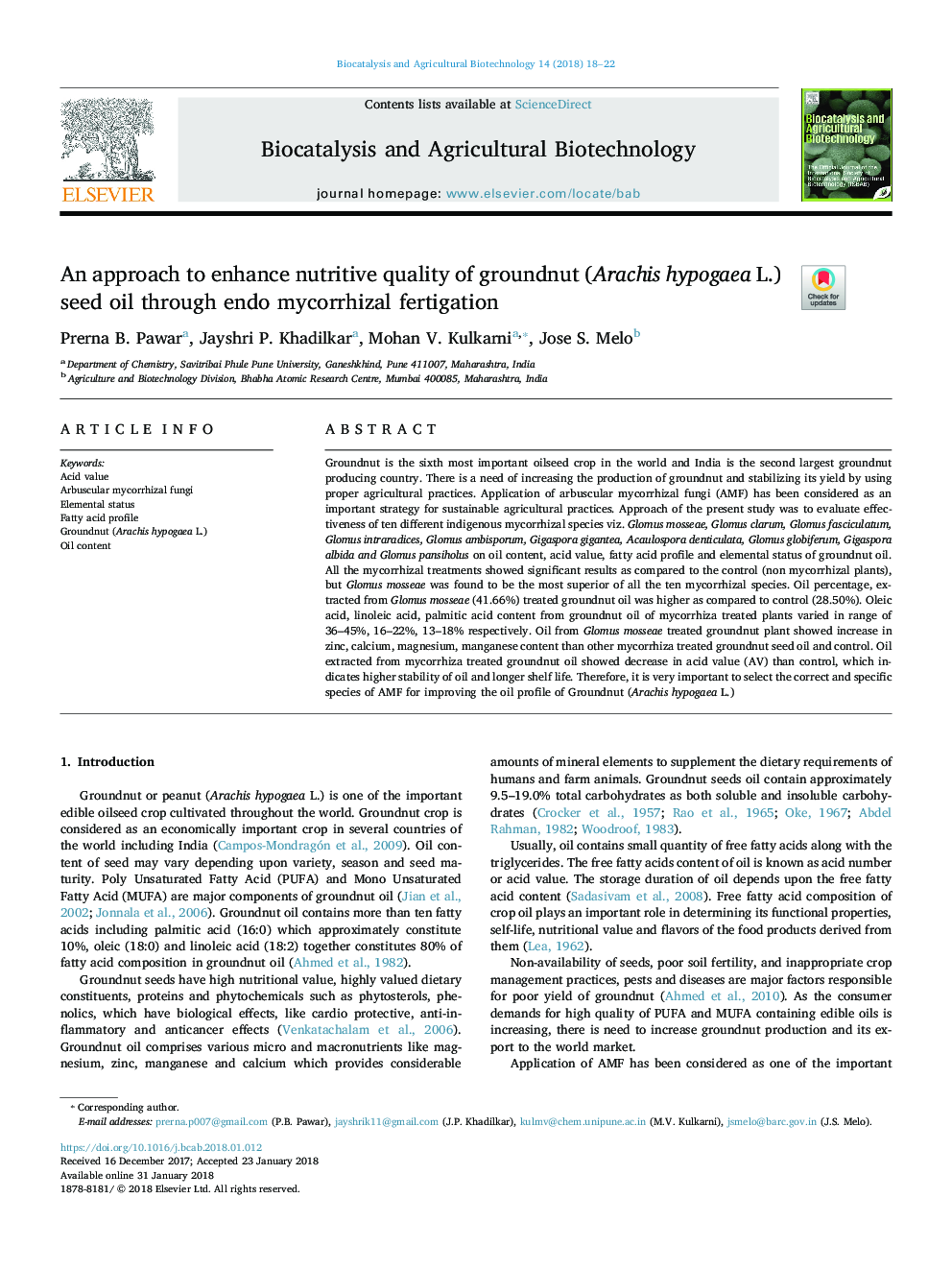| Article ID | Journal | Published Year | Pages | File Type |
|---|---|---|---|---|
| 8405778 | Biocatalysis and Agricultural Biotechnology | 2018 | 5 Pages |
Abstract
Groundnut is the sixth most important oilseed crop in the world and India is the second largest groundnut producing country. There is a need of increasing the production of groundnut and stabilizing its yield by using proper agricultural practices. Application of arbuscular mycorrhizal fungi (AMF) has been considered as an important strategy for sustainable agricultural practices. Approach of the present study was to evaluate effectiveness of ten different indigenous mycorrhizal species viz. Glomus mosseae, Glomus clarum, Glomus fasciculatum, Glomus intraradices, Glomus ambisporum, Gigaspora gigantea, Acaulospora denticulata, Glomus globiferum, Gigaspora albida and Glomus pansiholus on oil content, acid value, fatty acid profile and elemental status of groundnut oil. All the mycorrhizal treatments showed significant results as compared to the control (non mycorrhizal plants), but Glomus mosseae was found to be the most superior of all the ten mycorrhizal species. Oil percentage, extracted from Glomus mosseae (41.66%) treated groundnut oil was higher as compared to control (28.50%). Oleic acid, linoleic acid, palmitic acid content from groundnut oil of mycorrhiza treated plants varied in range of 36-45%, 16-22%, 13-18% respectively. Oil from Glomus mosseae treated groundnut plant showed increase in zinc, calcium, magnesium, manganese content than other mycorrhiza treated groundnut seed oil and control. Oil extracted from mycorrhiza treated groundnut oil showed decrease in acid value (AV) than control, which indicates higher stability of oil and longer shelf life. Therefore, it is very important to select the correct and specific species of AMF for improving the oil profile of Groundnut (Arachis hypogaea L.)
Keywords
Related Topics
Life Sciences
Agricultural and Biological Sciences
Agricultural and Biological Sciences (General)
Authors
Prerna B. Pawar, Jayshri P. Khadilkar, Mohan V. Kulkarni, Jose S. Melo,
